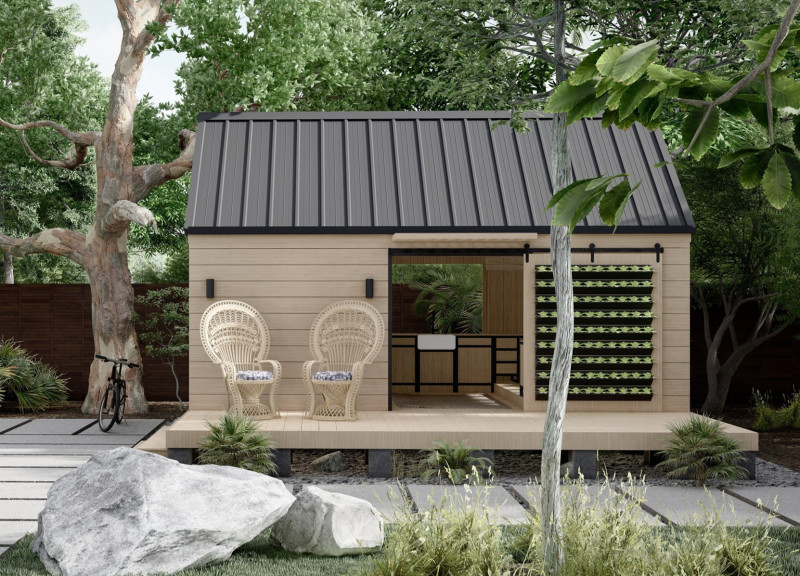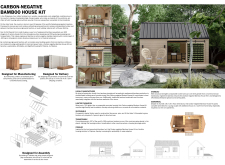5 key facts about this project
The Carbon-Negative Bamboo House Kit is a practical response to the significant housing shortage faced by millions of families in the Philippines. It aims to provide sustainable, affordable, and dignified homes in a context where many live in inadequate conditions. The design focuses on modularity and efficiency, using engineered bamboo as the primary building material, which supports both environmental sustainability and local community development.
Sustainability and Material Use
Engineered bamboo plays a central role in the design. It is a sustainable alternative to traditional building materials. This type of bamboo can sequester over 600 kilograms of carbon dioxide during its life cycle, while releasing only 200 kilograms during processing. As a result, it produces a net carbon-negative impact of -400 kilograms per ton. This approach highlights the commitment to reducing environmental harm while providing safe housing options.
Modular Design and Production
The housing kit employs a modular design that allows for prefabrication of its components in a controlled setting. Standardized panel components simplify the construction process, ensuring quality and efficient material use. Being flat-packed, the panels fit into standard 20-foot shipping containers, making them easier to transport and distribute. This arrangement supports timely housing solutions for families in need.
Quick Assembly and Utilities
Designed for rapid assembly, the housing kit includes built-in utilities with straightforward plug-and-play connections. This feature enables the entire structure to be set up in as little as four hours, directly addressing urgent housing needs in urban areas. The focus on quick assembly makes it practical and responsive to community demands for shelter.
Cultural Relevance and Local Economy
The design draws inspiration from traditional bamboo huts, creating a familiar feel for the intended residents. This cultural connection enhances acceptance and encourages widespread use. All production phases, from bamboo harvesting to the creation of engineered bamboo, occur locally. This approach supports the local economy and creates job opportunities. Additionally, incorporating traditional bamboo crafts into the design enhances its cultural significance while benefiting local artisans.
The engineered bamboo structure is built to endure natural disasters like typhoons and earthquakes common in the region. This focus on strength and stability ensures safety for residents. The project combines practicality with a resilience that contributes to a secure living environment for the community.



















































